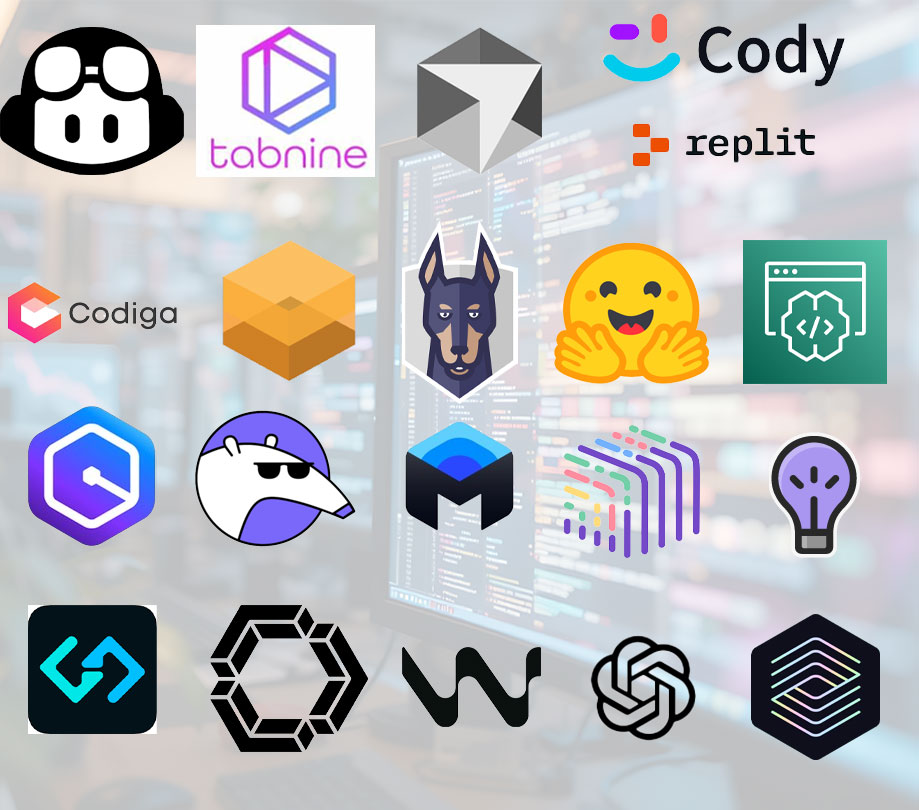Artificial Intelligence
20 AI tools every developer should be using right now
Saturday, July 12, 2025

|
Richard Harris |
In today’s rapidly evolving tech world, developers face both exciting opportunities and new challenges, making it essential to explore the 20 AI tools every developer should be using right now to stay competitive, boost productivity, and sharpen their coding expertise.
"Reports of my job’s death are greatly exaggerated." If you’re a developer in 2025, you might feel a bit like Mark Twain updating that famous quip for the AI age. The tech world is buzzing with artificial intelligence that can write code, catch bugs, and even predict what you’re going to type next. It’s equal parts exciting and unnerving. On one hand, these AI tools can boost your productivity and help save your job by keeping you competitive. On the other hand, if you lean on them too much, they can make a programmer look downright dumb by confidently spitting out mistakes. The key is learning to ride this AI wave without wiping out, use the tools, but keep your own skills sharp as a tack.
20 AI tools every developer should be using right now
Let’s dive into the top 20 AI-powered tools that developers (web, mobile, or otherwise) should be using right now. We’ll cover what each tool does and throw in the pricing details (in plain English, no confusing tables) so you know what’s free, what’s not, and how to get started. Along the way, we’ll chat about finding that sweet spot between coding with AI and coding with your own brain power. Buckle up, because the future’s coming fast, and if you play it right, you’ll be driving that future instead of getting run over by it.

The AI toolbox you need today
Below is a rundown of 20 must-have AI tools for developers. These range from intelligent code companions living in your IDE to powerful platforms that take coding to a whole new level. Whether you’re a seasoned coder who remembers dial-up, or a newbie who just wrote “Hello World,” there’s something here for you. And don’t worry, we’ll keep it casual and honest, like we’re two devs chatting over coffee (or maybe something stronger after a long debug session). Here we go:
1. GitHub Copilot - Pricing: ~$10/month for individuals, free for students/open-source.)
The OG of AI pair programming. Copilot is like an eager junior developer whispering solutions in your ear as you code. Integrated into VS Code, JetBrains, and more, it suggests whole lines or functions based on context. It’s scary good - writing boilerplate, unit tests, even answering “what’s the next line?” before you ask. Just remember, it’s trained on public code, so sometimes it’ll suggest something odd or outdated. Treat Copilot’s advice like a genius intern’s: super helpful, but double-check it so you don’t ship nonsense.
2. Tabnine - (Pricing: Basic free, Pro from ~$12 per user/month.)
Think of Tabnine as the quiet achiever of AI coding assistants. It autocompletes code in multiple languages, and you can even run it offline with local models for privacy. Tabnine supports over 80 languages and integrates with almost every IDE known to dev-kind. Its suggestions tend to be short and sweet (mostly single lines). It won’t write your whole app, but it’s great for speeding up routine typing. Plus, it learns your project’s patterns over time, like a buddy who picks up your coding style and finishes your sentences for you.
3. Cursor - (Pricing: Hobby free tier; Pro from ~$20/month.)
Cursor is an AI-infused code editor that wants to streamline your workflow. Imagine VS Code had a supercharged AI sidekick built-in, that’s Cursor. It can autocomplete code, fix simple errors, and even offer to refactor code that looks wonky. Collaborative features let dev teams share AI suggestions in real-time, which is pretty wild. It’s like having a pair programming partner who never gets tired. Just note, Cursor’s AI might struggle with truly hairy, complex logic, it can suggest a quick fix, but it’s still up to you to decide if it’s a stroke of genius or completely off-base.
4. Sourcegraph Cody - (Pricing: Free basic version; Pro from ~$9/month.)
Cody is what you get when you teach an AI to be a great search engine and a coding assistant. Built by Sourcegraph, it not only completes code but also searches your entire codebase and documentation to answer questions. Cody is fantastic for large companies or open-source projects where you need to find “where on earth was this function used before?” and then get help using it. It’s like having a librarian and a coder in one. Privacy-minded teams appreciate that Sourcegraph can run on-premises, so Cody won’t spill your secret sauce. It may take a bit of setup to get it indexing all your repos, but once it does, it’s a powerhouse for understanding and writing code across huge projects.
5. Replit Ghostwriter - (Pricing: Free basic; paid plans from $10/month, Hacker plan ~$7/month.)
Replit is a collaborative online IDE, and Ghostwriter is its built-in AI coding assistant. If you’re coding in the cloud (perhaps on a Chromebook or iPad, or just love browser-based dev), Ghostwriter has your back. It supports a bunch of languages (more than a dozen) and can explain code, suggest edits, and complete your code in real-time. A neat trick up its sleeve: it’s great with SQL and other less-common languages on top of the usual suspects like Python and JavaScript. Ghostwriter will even integrate with your Replit multiplayer sessions, imagine pair programming with someone and an AI helper at the same time. Pro tip: the Hacker plan gives you more AI power on the cheap if you’re a solo dev hacking on side projects.
6. Codiga - (Pricing: Free tier for individuals; Team plans available.)
Codiga is an AI and static analysis hybrid that keeps your code clean and secure. It plugs into your IDE or git workflow and not only autocompletes code, but also checks it against best practices and common bugs in real-time. Think of it as a diligent code reviewer who sits on your shoulder while you type. It’ll flag a potential null pointer or an SQL injection flaw as you’re writing it, better than catching it after deployment, right? Codiga also has a nifty “recipe” system: a library of reusable code snippets/patterns that you or your team can share, so the AI can suggest those when appropriate. If you’ve ever thought “There’s gotta be a cleaner way to write this,” Codiga might just pop up with the answer before you finish that thought.
7. Sourcery - (Pricing: Free for open-source projects; Pro from ~$12/user/month.)
Sourcery’s mission in life is to make your code better, not by writing new features, but by refactoring. This AI tool reviews your Python (and some other languages) code and suggests improvements to make it more readable, efficient, and Pythonic. It’s like a mentor who constantly says, “Hey, I see what you’re doing there, but try this instead, it’s cleaner.” Sourcery can simplify loops, chop down big functions, and remove duplicate code before you even commit. It even integrates with your pull requests on GitHub/GitLab to automate code review feedback. If you’ve ever had a nitpicky senior dev send back your code with a bunch of “cleanup” suggestions, well, Sourcery does that for you, minus the ego and with a lot more consistency.
8. Snyk Code (DeepCode) - (Pricing: Free tier for basic scanning; Pro/Team plans from ~$25/user/month.)
Snyk Code is the security guru in this list. Born from DeepCode’s AI, it scans your code as you write (or during CI) and highlights vulnerabilities and bugs. It’s like having a security expert and a QA engineer who never sleep. Snyk supports many languages and even scans dependencies for known vulnerabilities. The cool part is it explains why a piece of code is risky, often linking to relevant CWE or best practice info. So not only does it say “Hey, this line might be a buffer overflow risk,” it also educates you a bit. If you’re building anything that hits production, a tool like Snyk Code can save you from the classic “oops, we leaked customer data” nightmare, or at least reduce those 2 AM emergency patch deployments.
9. Hugging Face - (Pricing: Free community tier; Pro from ~$9/month.)
Hugging Face isn’t a single tool, it’s an entire buffet of AI models and resources. It’s hugely popular with machine learning developers, but regular devs can benefit too. On their platform you’ll find open-source models for things like code generation, code translation (convert that Python to Java in a snap), documentation summarization, you name it. Using Hugging Face’s models (like their CodeGen or StarCoder) is like tapping into an AI brain that’s been trained on lots of coding knowledge. They even host Spaces where you can run demos and small apps (think of it as a quick way to test an AI idea in your browser). If you’re the kind of dev who likes to tinker with new tech, Hugging Face is a playground. You can use many models for free, and if you need more power or private model hosting, that’s where the paid plans come in.
10. Amazon CodeWhisperer - (Pricing: Free for individual use; enterprise plans via AWS.)
AWS’s entry into the AI coding arena, CodeWhisperer is similar to Copilot in that it suggests code as you type. If you live in AWS Cloud9 or Visual Studio Code with AWS toolkit, you’ve probably seen it pop up. One advantage: it’s tuned with a focus on AWS APIs and best practices. It can complete code that interacts with AWS services (S3, DynamoDB, etc.) like a champ, which is great if you’re always copying snippets from Stack Overflow to call AWS SDKs. Another neat feature: CodeWhisperer will flag code that might be insecure or biased, and even scans your finished code for vulnerabilities. Essentially, it wants to be your AI developer buddy that also has your back on security. It’s completely free for personal use, which undercuts a lot of the competition, Amazon apparently decided they’d rather you not leave AWS just to use an AI coding tool. Fair enough!
11. Amazon Q Developer - (Pricing: Free tier available; Pro ~$19/user/month.)
Now we’re getting into cutting-edge territory. Amazon Q is like CodeWhisperer’s bigger, smarter cousin who not only helps with code, but with everything in your software project. Built on AWS’s Bedrock AI platform, Q Developer can answer architecture questions, set up cloud resources via chat, generate code, debug, you name it, all through a conversational interface. It’s the closest thing AWS has to an “AI project manager.” For example, you could ask, “Hey Q, set up a new serverless stack with an API Gateway, Lambda, and DynamoDB,” and it will actually scaffold the project (with your approval). It can even orchestrate multiple steps with different AI “agents”, one agent writes code, another designs the cloud infra, another checks cost optimizations. Sounds a bit like sci-fi, right? It’s real, though still evolving. If your world revolves around AWS, keep an eye on Q Developer. Just remember, outside the AWS ecosystem, Q might twiddle its thumbs, it’s an AWS specialist, not a generalist.
12. Qodo (formerly CodiumAI) - (Pricing: Free developer plan; Team plans from ~$19/user/month.)
Qodo is all about testing your code smarter, not harder. This tool uses AI to read your code and generate unit tests and sanity checks that you might not have thought of. It’s like a QA engineer built into your IDE. You point Qodo at a function, and it suggests test cases, edge conditions, and potential bugs. It’s amazingly helpful when you’re working on critical logic, it’s caught off-by-one errors and weird corner cases that would make any dev say “Huh, never thought of that.” Qodo also gives you a sense of your test coverage and where you might be missing tests. It currently supports popular languages (Python, JS/TS, Java, C++ etc.), which covers a lot of ground. For longtime devs, using Qodo feels a bit like having that one cautious colleague review your code and ask “But what if X happens?” except now it’s automated and much faster.
13. MutableAI - (Pricing: Free for open-source use; paid plans available.)
MutableAI is a code helper focused on refactoring and optimization. It’s similar to Sourcery in spirit, but language-agnostic and offers a mix of completions and transformations. When you’re stuck with a gnarly function or some less-than-elegant legacy code, MutableAI can suggest ways to simplify it. It can also generate code from natural language prompts, so you could write a comment like “// sort list of users by name” and it will try to write that function for you. The goal is to make code more maintainable, hence mutable, as in it can change your code for the better. It’s available as an editor extension and plays nicely with VS Code. This is one of those tools that might not be as famous as Copilot, but can quietly make your day easier by handling the boring refactors or quickly drafting that function you’re too lazy to write from scratch.
14. AskCodi - (Pricing: Basic features free; Premium plans available.)
As the name hints, AskCodi is like an AI buddy you can ask anything coding-related. It’s a versatile toolkit: you can ask it to generate code snippets, translate code from one language to another, write documentation comments, or even explain what a piece of code is doing in plain English. It integrates as a plugin for VS Code, JetBrains, etc., so it’s there when you need answers on the fly. Many devs use AskCodi to speed up writing repetitive code (like form validation logic, API calls, etc.) or to get a quick explanation of unfamiliar code. It’s not limited to one programming language or framework, it tries to be a jack-of-all-trades. While it may not always nail complex tasks perfectly, it’s incredibly handy for everyday “How do I do X?” questions right in your editor. Think of it as a smarter Stack Overflow search that actually types the answer into your code if you want.
15. Microsoft IntelliCode - (Pricing: Free - included with Visual Studio and VS Code.)
IntelliCode is like the grandfather of AI coding assistants - around in basic form before it was cool, and now upgraded with modern AI. If you use Visual Studio or VS Code, you probably have seen IntelliCode’s suggestions (the ones with the little stars indicating it’s AI-enhanced). It provides smarter auto-complete by learning from thousands of open-source projects. For instance, when you start typing a popular API call, IntelliCode can auto-fill not just the method name but also the likely parameters you’ll use, based on how others have used it. It’s subtle, not as flashy as Copilot, but it’s free and baked into the Microsoft dev tools many of us already use. Consider it augmenting your Intellisense with some machine learning pixie dust. It’s especially useful in languages like C# or C++ within Visual Studio, where it can really speed up writing boilerplate code by predicting the next bits.
16. CodeGeeX - (Pricing: Free for individual use.)
CodeGeeX is an open-source AI code assistant originating from academic research. It’s a large language model tuned for coding, supporting dozens of programming languages (including ones like MATLAB or even assembly). The big draw: it’s free and you can even run it yourself if you have the hardware. For most devs, the easier path is to use CodeGeeX via its VS Code extension, which will call the model from a cloud API (also free usage as of now). It does code completion and generation similar to Copilot. While it might not be as polished in every scenario, it’s surprisingly powerful. It’s kind of like the community-built electric car compared to the big brand Tesla (Copilot), it might require a bit more tinkering, but you have full control and it won’t cost you an arm and a leg. If you love open-source or worry about the corporate overlords of AI, CodeGeeX is one to check out.
17. Continue.dev - (Pricing: Open source and free; paid team options from ~$10/user/month.)
Continue is an open-source project that turns your VS Code into an AI dialogue partner. Once installed, you can literally have a chat with your code, ask questions about it, get explanations, or have it generate/refactor code through a conversational interface right in the editor. It’s like having ChatGPT wired directly into VS Code, with awareness of your project. The best part is that Continue can run with local models or remote ones, your choice. So you can keep everything offline if you have a capable machine, or connect to an API. The free model might not be as brainy as GPT-4, but it’s improving rapidly. Continue.dev is great for those who want a Copilot Chat-like experience without paying Microsoft or OpenAI for the privilege. You can step through tasks iteratively: “Hey AI, what does this function do? Now can you refactor it? Write a test for it.” It’s a glimpse into the agentic future of coding, where you and an AI sort of pair-program via high-level conversations.
18. Windsurf (formerly Codeium) - (Pricing: Free plan available; Pro for teams ~$15/month.)
Windsurf Editor is billed as the first “AI-native” IDE. If that sounds buzzwordy, think of it this way: it’s an entire coding environment built around an AI agent that helps you write and manage code. Codeium (a popular free code completion tool) rebranded to Windsurf and expanded its offerings. You can either use the Windsurf plugin in your current IDE or try their standalone editor, which has an AI agent named “Cascade” to assist you. This thing not only autocompletes code, but can handle broader context, like making project-wide changes or answering questions about your codebase. It’s powerful, but as with any brand-new tech, expect a learning curve. Some devs absolutely love having an AI co-developer deeply integrated; others find it a bit much for simple tasks. The good news is the basic features (like the classic Codeium auto-complete) remain free for individual devs. If you want to see what the future IDE might look like, give Windsurf a spin, it feels like something out of a sci-fi movie when it works, and occasionally like a stubborn robot butler when it misfires.
19. OpenAI ChatGPT (GPT-4) - (Pricing: Free for standard use; ChatGPT Plus with GPT-4 is $20/month.)
We can’t have a list of AI tools without mentioning the one and only ChatGPT. While not built into an IDE (unless you count all the third-party plugins), ChatGPT itself has become a daily go-to tool for thousands of developers. Whether you’re asking it to brainstorm solution ideas, explain a snippet of code, or even write a regex (bless its artificial heart for handling regex), it’s like having a programming guru on call 24/7. The free version (GPT-3.5) is decent for simple queries, but if you’re serious, GPT-4 is far better at coding tasks, it’s more coherent and makes fewer mistakes. You can use it via the web interface or through the OpenAI API in your own apps/scripts. The key with ChatGPT is to treat it like an assistant, not an oracle. It will happily give you answers that sound convincing but can be flat-out wrong. Ask for explanations, double-check the outputs, and use those critical thinking skills. As a wise fictional scientist (Dr. Ellie Arroway from Contact) might advise, “trust but verify”, especially when an AI tells you something unbelievable. In the right hands, ChatGPT is like a superpower; in the wrong hands (or with sloppy prompts), it’s a quick way to do something dumb faster. So use it, enjoy it, but stay in control.
20. OpenAI Codex (Legacy) - (Pricing: N/A, deprecated - use GPT-4 instead.)
We’ll end the list with a nod to the past, which is oddly also a glimpse of the future that’s already here. OpenAI’s Codex was the model that essentially kicked off this whole AI-for-coding craze, powering early versions of Copilot. It could turn natural language into code surprisingly well. However, as of now, Codex as a standalone product is deprecated, OpenAI moved on to more advanced models (like GPT-4) that encompass its abilities and then some. Why mention it then? Because if you see references to Codex, know that it’s basically “the engine under Copilot’s hood”. And its spirit lives on in all these modern tools. In a few years, we might be talking about GPT-5 or some other AI that makes today’s tools look quaint. The pace is that fast. So, keep an eye on the evolution. Today’s cutting-edge tool might be tomorrow’s memory. As a developer, the best thing you can do is remain curious and adaptable, that’s one skill no AI can take from you.

The double-edged sword of AI in programming
By now, one thing should be clear: AI is a power tool in the developer toolkit. Like any power tool (think chainsaw, nail gun, or maybe a lightsaber if you’re feeling fancy), it can accomplish amazing feats and it can cause a mess if used carelessly. Let’s talk about that balance for a minute.
AI can save your job by automating mind-numbing tasks and boosting your output. You can get more done in less time, shipping features, squashing bugs, impressing the boss, all that good stuff. It’s like having a friendly robot sidekick who does the boring bits while you focus on the interesting problems. In a world where deadlines are tight and expectations high, that’s a godsend. In fact, many companies now expect developers to leverage AI; if you don’t, you might fall behind colleagues who do. (There’s an old joke: two hikers encounter a bear, one ties his shoes tighter. “You can’t outrun a bear!” says the other. “I just need to outrun you,” he replies. In the dev world, AI might be that extra shoe-tying that keeps you ahead.)
But, and this is a big but, if you rely on AI blindly, it can make you look dumb. AI doesn’t truly “understand” your project or the real-world context; it patterns matches and predicts. It might suggest code that works 90% of the time, and 90% is great until that 10% failure blows up prod. Many a programmer has been embarrassed by confidently copying an AI-generated snippet only to have a teammate or user point out it doesn’t actually do what it’s supposed to. Or maybe it uses an outdated approach that you didn’t catch because, hey, it looked legit. Using AI without comprehension is like riding a self-driving car without learning to drive, most of the time you’ll get there, but when the unexpected happens, oh boy.
The takeaway is balance. Use AI to get a head start, but then apply your human insight. If Copilot writes a function, read it and test it as if a junior developer on your team wrote it, because effectively, that’s what happened (except this “junior dev” was trained on millions of repos and has no accountability). If ChatGPT explains a concept to you, great, but maybe double-check the logic before you stake your reputation on it. Think of AI as a collaborator who’s usually right but confidently wrong on occasion. You’re the senior partner in this relationship, and you have to oversee the work.
In practice, keeping your programming fundamentals sharp is more important than ever. The AI can handle syntax and boilerplate; let it. Your value as a developer will increasingly be in knowing what should be built, how to architect a solution, and why something needs to be a certain way. Those deeper skills, system design, critical thinking, domain knowledge, creative problem solving, are hard for AI to fake. So don’t skip learning algorithms, or understanding that new framework, or practicing debugging. The better you are, the better use you’ll make of the AI. It’s like having a high-powered rifle, in the hands of a skilled marksman it’s incredible, but if you don’t know how to aim, you’ll just shoot your foot.
Future shock: Will we even need to code?
Now let’s put on our futurist hat (maybe one of those shiny sci-fi helmets) and imagine where this is all going. It’s not so far-fetched to say that in the future, AI might not need any formal programming language at all, it will just “know” what to do from our intentions. We’re already seeing sparks of that. Give GPT-4 a plain English prompt and it can produce a working snippet in Python, JavaScript, or even assemble some SQL queries. Project this trend out a decade: you might be able to say, “Hey AI, build me a mobile app that does X, Y, and Z,” and it could theoretically piece it all together, from UI to backend, by connecting the dots between vast troves of data, code, and patterns it has ingested.
What does that world look like? Possibly, programmers as we know them today might evolve into something else. Instead of writing detailed code, a developer could become more of a problem designer or AI wrangler, describing the desired outcome, constraints, and edge cases to an AI (through prompts or maybe through visual flowcharts, who knows) and then iteratively guiding the AI to refine the solution. In a sense, coding could become more like coaching an extremely powerful but sometimes naive assistant.
It’s a bit like managing a team of genius-level robots: you won’t tell them how to do every little thing in Java or C#, you’ll tell them what you need and maybe why, and they’ll figure out the how. If that sounds like science fiction, consider how much code is already being written by AI from just natural language. The seeds are planted.
Some folks compare this shift to the move from assembly language to high-level languages, or from writing machine code to using libraries and frameworks. Each abstraction leap made us less concerned with the nitty-gritty and more focused on ideas. AI could be the ultimate abstraction, skipping actual coding syntax altogether. It’s programming in concepts. Today, you might write “for (int i=0; i<n; i++)…” but tomorrow you might just say “loop through these things” and the AI knows what you mean and does it in the optimal way for the context (no off-by-one errors, no forgotten edge cases, it just does it, because it “knows” those from training).
Will this put programmers completely out of a job? That’s the billion-dollar question. Historically, when automation comes, roles shift rather than vanish overnight. COBOL programmers thought SQL might replace them, but it just changed what they focused on. If routine coding gets fully automated, developers will likely move up the value chain: focusing on high-level design, or on areas where human insight is critical (e.g. understanding user needs, making ethical choices, etc.). Also, someone has to build and maintain those AI tools and the infrastructure they run on, surprise, that’s more coding and engineering (at least until the AI start doing that too… but let’s not go full Terminator here).
In the far future, who knows, maybe AI will design, code, test, and deploy entire systems perfectly, and humans just turn the big red switch on or off. But I’d wager that’s farther off than the hype would have you believe. More likely, the near future will make us masters of AI tools. We’ll be less hands-on keyboard crafting algorithms line-by-line, and more like orchestra conductors. The AI bots are the musicians (brilliant, tireless, but needing direction), and we’re waving the baton, setting the tempo, ensuring they’re playing the right tune. Managing AI prompting and bots could become akin to managing a team of extremely fast but somewhat literal-minded junior developers. In other words, you’ll still be debugging, but maybe you’ll be debugging the AI’s approach to building your software rather than writing the code yourself.

Wrangling AI and staying relevant
So how do you, as a developer, thrive in this weird and wonderful present-future? Embrace the tools, but don’t become a tool yourself. Be the Ellie Arroway of coding, curious, data-driven, not afraid to explore the unknown, but also grounded in reality when it’s time to present results (hopefully with less drama than contacting aliens!). Channel a bit of Einstein’s bold imagination, dare to think how things could be done differently with AI, but temper it with Mark Twain’s common sense and wit. Question the AI’s output the way Twain would poke fun at a tall tale, and experiment the way Einstein would test a hypothesis.
In practical terms: start using some of these AI tools if you haven’t already. Even if you’re an old-school developer who hand-crafts every line of code like it’s poetry (I respect that, by the way), give these assistants a try on a side project. You might be surprised at how much mundane grind they take off your plate. And if you’re a new developer, great, but don’t skip learning the fundamentals just because an AI can help you cheat on a coding test. You don’t want to be that person who can’t code their way out of a paper bag without an AI. That’s like a calculator-dependent cashier who freezes when the power goes out and they have to do math by hand. Not a good look.
Keep honing the skills that AI can’t easily replicate: architecture, creative problem solving, understanding user stories, cross-domain knowledge, and heck, empathy and communication. The last one’s no joke, being able to explain complex tech in human terms, or to collaborate with a team, is something AI can’t do (it can simulate it, but it’s not real). Those skills will ensure you have a place in the software development process, whatever new tools come along.
And finally, stay curious and adaptable. The only constant in tech is change, we’ve all heard that. AI is just the latest big change, and it won’t be the last. If you adopt a mindset of lifelong learning, AI goes from a threat to just another new thing to learn. And honestly, playing with these AI dev tools can be pretty fun. It’s okay to be amazed, I still grin like an idiot when Copilot suggests a whole function and it works. It’s like having a bit of magic in your editor. Just don’t let the magic trick you into losing your own magic touch.
To wrap up (before this turns into a novel): AI is here to stay in software development. It will change how we do our jobs and what skills are in demand. But a great developer is not defined by typing semicolons or memorizing API syntax, it’s by problem-solving and delivering value through software. Use AI to amplify those abilities, and you’ll do just fine. In the words of a certain famous author often quoted for wisdom (yes, Twain again): “The secret of getting ahead is getting started.” So start experimenting with these tools, keep your wits about you, and code on. The future’s knocking, time to answer, with AI at your side and your own expertise leading the way. Happy coding, y’all!

Become a subscriber of App Developer Magazine for just $5.99 a month and take advantage of all these perks.
MEMBERS GET ACCESS TO
- - Exclusive content from leaders in the industry
- - Q&A articles from industry leaders
- - Tips and tricks from the most successful developers weekly
- - Monthly issues, including all 90+ back-issues since 2012
- - Event discounts and early-bird signups
- - Gain insight from top achievers in the app store
- - Learn what tools to use, what SDK's to use, and more
Subscribe here









